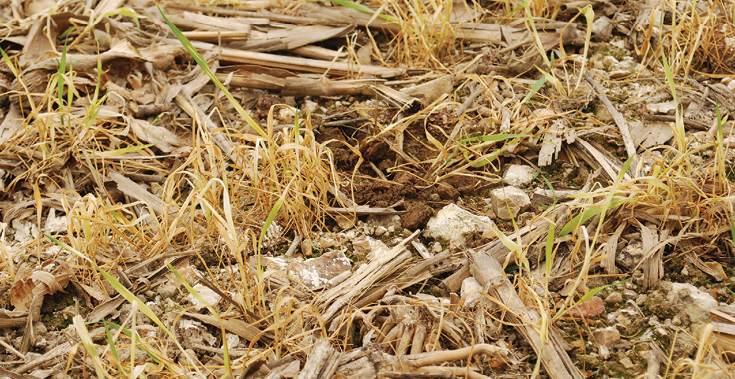Cover crops are used to address multiple resource concerns and can provide a wide range of conservation benefits including reduced soil erosion, scavenged residual soil nitrogen, weed suppression, and supplemental livestock forage. The carbon to nitrogen (C:N) ratio of the cover crop determines the durability of the cover crop residue.
Durable cover crop residue can be desirable or undesirable depending on the scenario and the specific resource concerns addressed with the cover crop. For example, durable cover crop residue is thought to increase soil organic matter and reduce soil erosion. On the other hand, it may tie up soil nitrogen that subsequent crops need, especially early in the development of the crop. So, it’s not just the species of cover crop that determines the C:N ratio of the residue but also the timing of the termination of the cover crop. Cover crops terminated at an earlier growth stage have a lower C:N ratio in their residue than those terminated at a later growth stage.
Cool season grasses are a popular component of cover crop mixes. Cereal rye (Secale cereale L.) is a commonly used cover crop with a C:N ratio as low as 30:1 and as high as 50:1. These ratios are based on plant maturity, but a common practice is to terminate cereal rye cover crops before maturity. To evaluate how C:N ratios of cereal rye varieties vary with termination timing, the NRCS Manhattan, KS Plant Materials Center conducted a study at Leonardville, KS in 2020-2021.
Samples were taken from the varieties weekly from mid-March to late April to coincide with common commodity crop cover crop rotations. All varieties developed their C:N ratio similarly both years. The C:N ratio was 12:1 in mid-March and near 24:1 by the end of April. A practical application for using this data is: if durable cereal rye residue is not a specific goal and the potential tie up of soil nitrogen is a concern, terminate the cereal rye 200 days after planting, if a more durable residue is desired, delay termination of the cereal rye until 210 days or more after planting.






